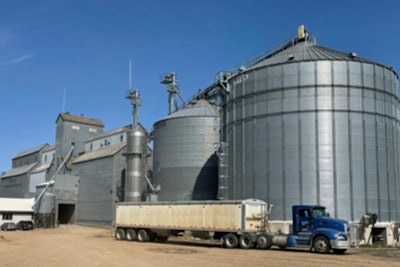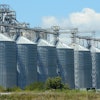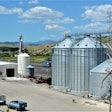
Columbia Grain International(CGI) has acquired the grain handling assets of Grafton Farmers Co-op Grain Co., a local cooperative grain originator and merchandiser with locations in Grafton, ND.
CGI took operational control of the facilities last month and has maintained a steady flow of business during harvest.
The acquisition strengthens CGI’s presence in the Northern Red River Valley and expands its capability to handle grain between its Crystal and Minto facilities in North Dakota.
Facility will handle a variety of commodities
The elevator will handle a wide range of commodities, including wheat, corn, soybeans, dry beans, yellow peas, sunflowers, canola, and more.
“Bringing Grafton into the Columbia Grain family further connects our operations in Crystal, Minto and Arvilla," saidKurt Haarmann, senior vice-president, Grain & Oilseeds for CGI.
"The commitment of the board of directors of Grafton to provide seamless services to the elevators’ patrons was a big part of our decision to move forward with this transaction."
Haarmann &表示,该公司将提供额外的公关oduct line and merchandising opportunities for the growers in the Grafton area.
Elevators served by rail
CGI will continue to load some grain by rail at the Grafton facility depending on the markets.
The two elevators in Grafton are on the BNSF and Dakota Northern rain lines. CGI will also offer agronomy services through its Arvilla facility into the Grafton area, providing farmers more options for their agronomy needs.
Larry McCollum , Columbia Grain manager of the Crystal and Grafton elevators, will oversee the elevator’s management.
“I look forward to working with customers and cultivating growth in the Grafton community,” said McCollum.
Grafton Farmers Co-op Grain Co. was first incorporated in 1916. A 30,000-bushel annex was built in 1938 with a 60,000-bushel annex added in 1954 and an 80,000-bushel annex in 1969. In the past three years, much of the conveyance equipment has been upgraded or replaced.





















